► Sampling six generations of S-Classes old and new
► More than four decades of luxuriousness explored
► What makes the best-selling luxury car so special?
Seldom are there opportunities for motoring journalists to drive two consecutive generations of car back-to-back, so the prospect of piloting all six iterations of the Mercedes S-class on the same Bavarian roads on the same rainy autumnal day was too tempting to resist.
Hang on, hasn’t the S-class has been around for more than six generations?
Well, yes… and no. Before Mercedes swapped to prefixing its model nomenclature with the Class designation in 1993, there’d been an illustrious back-catalogue of Sonderklasse Benzes with an S suffix.
While models such as the 1954 W180 (Ponton) and 1959 W111 (Fintail) are retrospectively regarded as part of that contemporary lineage, it wasn’t until the W116 series debuted in 1972 that the S-class title was applied to the range, hence our starting point.

Thanks for the Germanic luxury car history lesson…
Woah! There’s more, yet.
Including those 1950s-to-70s-not-really-S-classes, over four million four-door saloon versions have found homes, with the W126 generation proving the most popular: 818,000 were sold globally between 1979 and 1991.
Today, it’s the Chinese market that laps up the greatest proportion of S-class production, accounting for 10% of sales, with an average customer age of just 35.
Two-door S-class Coupes arrived with the 126-series, with the soft-top Cabriolet only arriving in 2016 with the current 222-series generation.
1972-79 W116: where it (officially) began
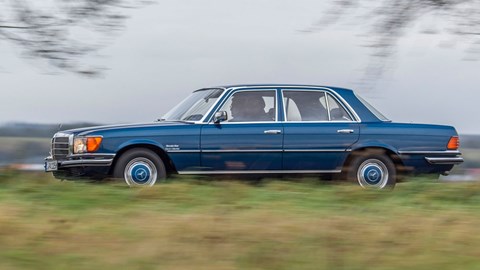
Embodying many of Mercedes’ safety concepts, the first S-class was a paragon of forward-thinking luxury when it arrived on the eve of the Oil Crisis – perhaps explaining why the entry-level 280SE was the most popular variant.
An enormous four-spoke steering wheel with a padded central boss, Cinemascope headlamps, ribbed tail lights (for visibility rather than pleasure) and recessed side windows to minimise muck collection were the most obvious manifestations of these safety measures, but more was to come.
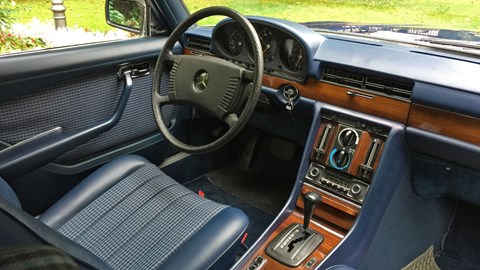
Although Mercedes didn’t invent anti-lock brakes, S-classes built from 1978 became the first series production cars with an electronic ABS system – supplied by Bosch – that’s akin to what’s commonplace today.
Benz aficionados go weak-kneed at mention of the 450SEL 6.9 edition of the W116 (we’ll gloss over that it was really only a 6.8), but that imperious V8 rumble was available for a more modest sum in the guise of the 350SE, as per this 1979 model.
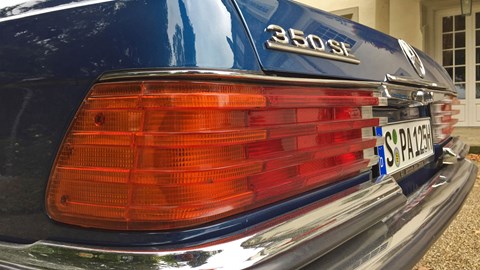
With 202bhp on tap, it’s more than able to keep modern turbodiesel hatchbacks honest, although its body roll encourages you to ease off in bends, embracing the comfort instead.
Sure, the soft, slightly bouncy ride dates this S-class, but its controls and general handling traits don’t feel archaic today. It must have felt like driving a car from the future back in the days of flairs and Fablon.
1979-91 W126: global domination unlocked
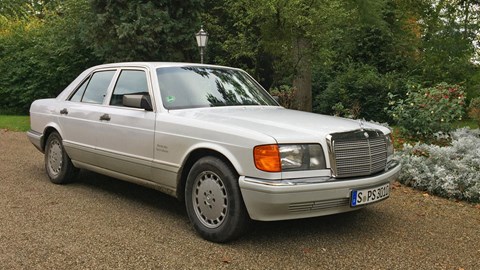
Slippery bodywork courtesy of honed aerodynamics and a comprehensive weight reduction, including the introduction of light-alloy V8s, enhanced the Mk II S-class’s performance and efficiency.
Metal bumpers were still commonplace in the late-1970s, so the decision to fit the W126 with deformable plastic ones increased its apparent modernity. Plus, in that pre-parking sensor era, minor dings were dealt with far easier.
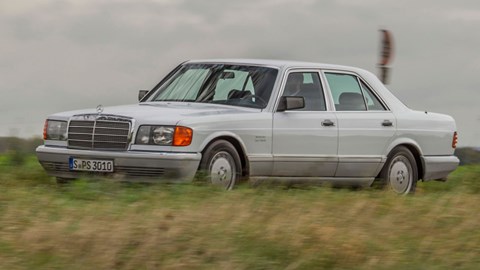
Perhaps remarkably, even with this late-model 300SE from 1990, the W126 feels like a careful, subtle evolution of its predecessor, both to be in and to drive.
Well-assembled plastics frame suspiciously shiny wood appliques, punctuated by easy-to-operate switchgear and a multitude of analogue dials. Try and forget that blue velour – the majority of the remaining W126s in Britain have hide.
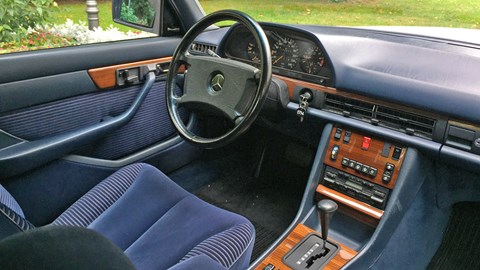
It’s tauter, less wallowy and more predictable as you press on, but as the 3.0-litre straight-six only musters 185bhp it struggles to delight with its pace.
Still supremely comfortable, a tangible degree of firmness has entered the ride equilibrium, but nothing that will trouble your sense of wellbeing as you glide along.
1991-98 W140: too much of a good thing
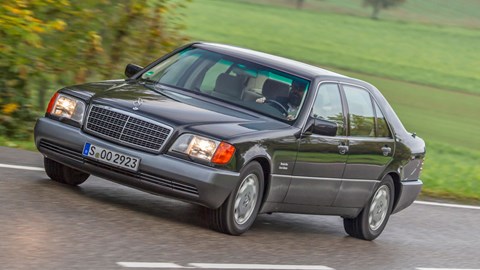
Driving the slab-sided W140 S-Class immediately after the car it replaced is astonishing, so much so that it felt as though we’d missed a generation or two out, such is the leap forward it represents.
Mercedes’ aim was to showcase its corporate might and while it arguably succeeded, it was simply too much, particularly as it also debuted in recession-hit times.
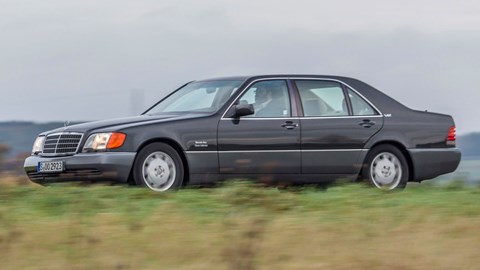
Wherever you imperiously waft around you feel as though you’re sticking two fingers up to the proles outside. Not that you can hear their jeering terribly well thanks to the double-glazed windows (although BMW pipped Merc to that post with its contemporary 7-series).
Encapsulating the W140’s excess is the flagship, 600SEL (later S600L), with 402bhp – modest by today’s standards – of might being channelled to the rear wheels. Discretion was waivered with the gauche V12 badges on the rear wings.
Yet driving this generation of S-class makes all of that seem unimportant. While comfort was paramount, it’s remarkably lithe in bends, only feeling cumbersome at slower speeds.
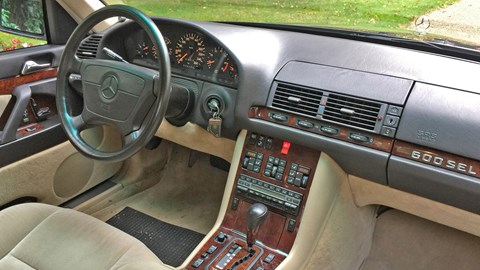
Yes, glossy timber still adorns the cabin, the wheel’s larger than what you’d expect to find on a yacht, but it’s soothingly delightful. Expensive, yes, but excessive no…
But wait, what’s this? Is that an electrical adjustment for the rear-view mirror..? Case dismissed.
1998-05 W220: the slinky S-class
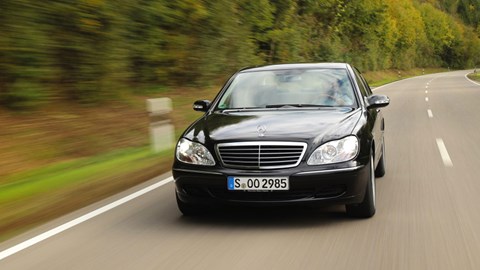
Hindsight’s a wonderful thing, but Mercedes’ reaction to the over-the-top W140 appears to have been to rein-in the parameters so much that the resultant W220 doesn’t look much like an S-class at all.
It’s long, naturally, but the slender grille is almost apologetically small, while the low-slung lines are bordering on it being a half-hearted prequel to the four-door coupe genre.
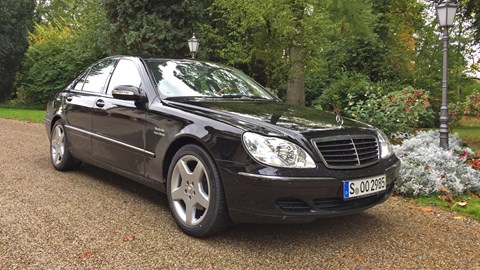
More weight was saved – goodbye double-glazing – but adjustable air suspension and adaptive cruise control under Mercedes’ Distronic branding made their S-class appearance.
While you could still specify a twelve-cylinder powerplant if your pockets were deep enough, more significant was the 2002 arrival of 4Matic four-wheel drive in the S-class. Not that Britons enjoyed the traction benefits as engineering the system for right-hand drive was deemed impossible.
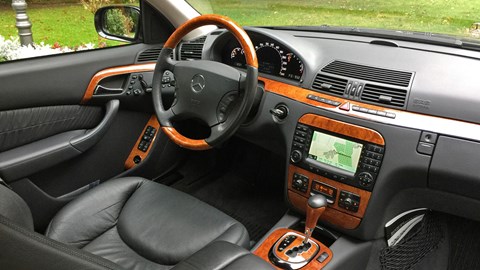
But these shores did see this 3.7-litre S350 variant in rear-wheel drive format, mustering a modest 241bhp. Although outright pace is lacking, it feels rewardingly agile for such a large limousine, a further hint that while it’s undeniable comfortable, it was a toe in the water for exploring what else Mercedes could offer its well-healed clientele.
2005-13 W221: a return to form
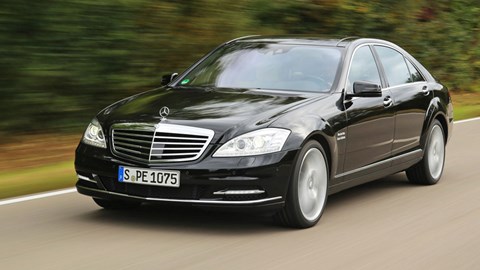
After seven years of discretion, the W221 heralded a return of a prouder S-class, with a more imposing prow, heavier-set lines and bold wheelarches evoking notions of pre-war Benzes with their separate wings.
Material quality jumped leaps and bounds, too, the luxurious leather-lined cabin showcasing all manner of technological advances which were either devised or significantly honed by Mercedes.
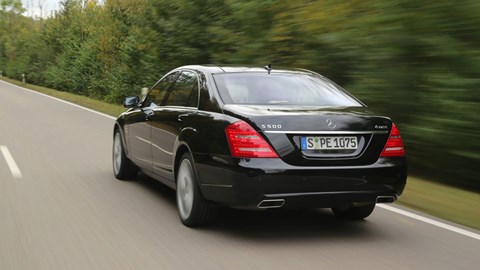
Semi-autonomous braking, lane-keeping assistance and a night vision display were among the highlights, but they pale into insignificance compared with how drives.
There’s no chasm like there was between W126 and W140, but more of a clearer focus on being a comfortable, refined saloon in which to be chauffeured. Those seeking a sportier alternative needn’t explore BMW or Jaguar showrooms any more, for the E-class-based CLS had slotted into the gap vacated by the W220.
Diesel-engined S-classes by now dominated British sales – and again the 4Matic system was unavailable with RHD – but those who craved a V8 soundtrack could still plump for the 429bhp, 4.7-litre S500.
Perhaps the greatest compliment to the W221 S-class is that even now it’s been out of production for several years, it still makes for a better luxury saloon than some rivals. Hunt out a well-loved used one.
Read CAR’s Mercedes S320 CDI LWB review from 2008
2013-date W222: the best just got better
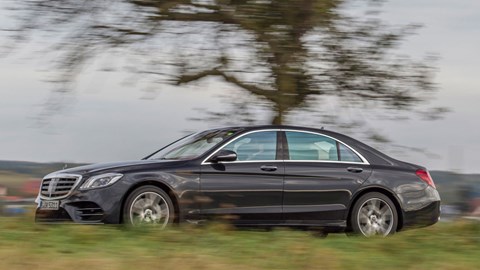
It barely seems five minutes since the current S-class was unveiled, but such is the march of time here we are sampling the inevitable mid-life facelift.
Sensibly, Mercedes’ designers have opted not to tinker with the overall rightness of its silhouette, instead making detail changes to the LED lighting graphics (note the cascading trio of day-running lights up front) as well as ramping up the feel-good factor inside.
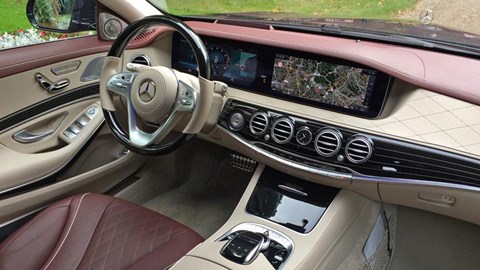
There’s more leather, quilted of course, touch-sensitive pads in lieu of conventional buttons on the steering wheel and a single pane of glass for the double-width instrument binnacle and multimedia display.
Luxuriating in the S560 4Matic – you guessed right, not for the UK where 90-odd percent go for an S350d – it’s easy to see why the S-class remains the default luxury car choice around the world. When something does what it’s supposed to so damn well, why on earth would you risk being brand disloyal?
Click here to read CAR’s Mercedes S300 BlueTec Hybrid review from 2014
So, what have we learned?
What lies at the heart of the S-class’s DNA is decades-worth of engineering talent in automotive form, representing the very best at what the Three-Pointed Star does.
Whether it’s the best car in the world full stop is arguably an irrelevant cul-de-sac of a question: it’s not as bespoke as anything from Rolls-Royce’s Goodwood facility, for instance, but then you can have one for the comparatively modest sum of £70,000.
That’s nevertheless deep within the rarefied air of high-end – but mass-produced – four-dour saloons for those who’ve made it in life. The S-class is – and always was – the pinnacle.
Read all of CAR’s Mercedes reviews here